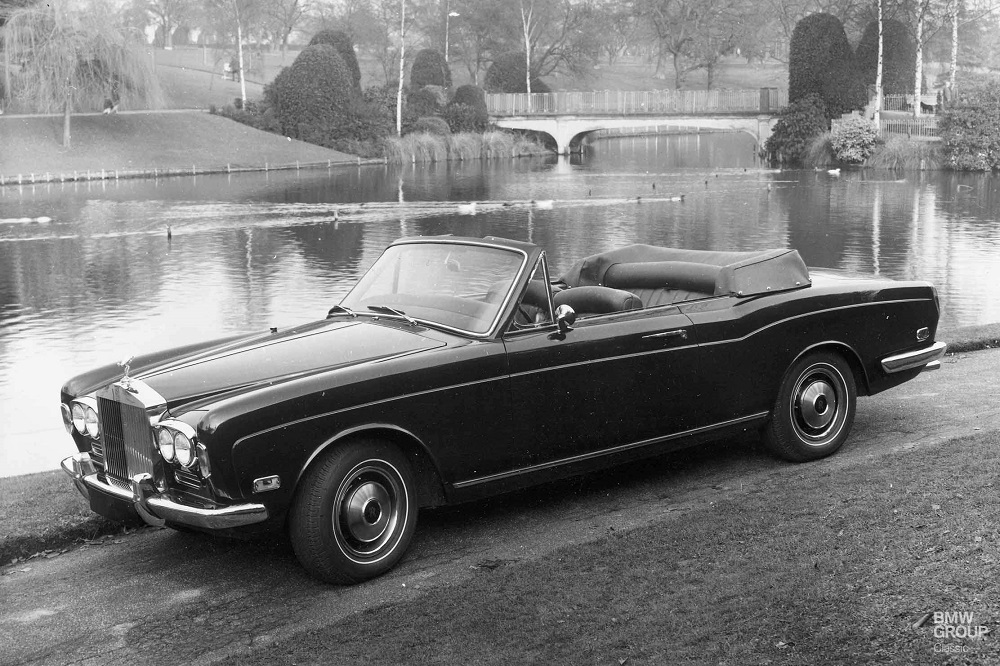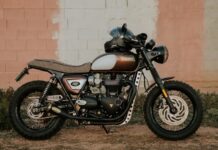In 1971, at a time when the four-seater convertible as a concept seemed to be on its way out, a new version of the open-top Rolls-Royce built since 1967 on the basis of the Silver Shadow Coupe was launched with the evocative title “Corniche”. The melodious French term for a particular type of coastal road summed up the model’s chic looks and open-hearted character to perfection. Its immaculate finish and stately proportions still turn heads today. Constantly refined and updated over several decades, it remained in production until 1995 and became a symbol of success among VIPs and media celebrities.

A new era began with the launch of the Rolls-Royce Silver Shadow in 1965, the marque’s first car to feature a state-of-the-art monocoque body construction. In 1966 the four-door sedan was followed by a two-door coupe version with a shortened roofline, which was built at Mulliner Park Ward in London. And a convertible joined the line-up the following year. In 1971, these two derivatives acquired the title “Corniche”, the poetic sounding name given to a coastal road in the south of France – where Sir Henry Royce had spent a large part of his life. The moniker was intended to symbolise the kinds of places the creators of these extra-special Rolls-Royces envisioned them gliding along, steered by the array of stars and celebrities whose faces were plastered across magazine covers at that time.
The presence and the luxury.
Like all Rolls-Royce cars, the Corniche had an imposing appearance, measuring nearly 5.20 metres in length and weighing in at 2.25 tonnes unladen. With the roof down, it held the captivating air of a magnificent luxury yacht. This was accompanied, needless to say, by a commensurate amount of muscle “below deck”. The V8 supposedly generated slightly more power in the Corniche than in the sedan version of the car, although its performance was merely described as “adequate” (in traditional Rolls-Royce speak), rather than being spelt out in figures. The Solex four-barrel carburettor introduced in 1975 hiked the engine’s propulsive power another notch, while the factory figures for 1980 quoted a time of around 11 seconds for 0 to 100 km/h (62 mph) and a top speed of nearly 200 km/h (124 mph). These were academic numbers for a vehicle whose propensity for leisurely cruising was second to none.
The art of craftsmanship.
Anyone who has ever had the honour of taking the wheel of a Rolls-Royce of this ilk will be familiar with the overwhelming feeling evoked by its exquisite appointments and meticulous build quality – the fine aroma of the Connolly leather, the grain of the wood trim, the click of the switches, the effortlessness of all functions (the lever for the three-speed automatic gearshift even had servo assistance). It is all quite mesmeric and can perhaps be best compared to the sensation when contemplating and touching a work of art. A Rolls-Royce may well instil a sense of respect and perhaps even awe when seen from the outside, but on the inside it pampers its owner with delightful ease of use that borders on the childishly simple.
The soft-top roof was another shining example of masterful craftsmanship. It had a thick lining and was, naturally, operated at the push of a button. The cover had to be buttoned down by hand admittedly, but it was a perfect fit. Impermeability to rain went without saying, while the inherent differences in construction meant acoustic insulation was slightly inferior to the coupe variant’s. Production of the coupe came to an end in 1982.
Pleasure and class – boundless in every way.
All Corniche models were built in London until 1992 – at Mulliner Park Ward, a firm created out of the merger of two formerly independent coachbuilders acquired by Rolls-Royce in 1939 and 1961 respectively. Over the years, the original version evolved unobtrusively into the Corniche II, III and IV and the Corniche S. In 1992 production shifted to Crewe and in 1995 the order books finally closed with a total of 5,146 examples recorded (Rolls-Royce Corniche Convertible, including II – IV and Corniche S).
The Corniche represents Rolls-Royce at its best, complete with the ability to make its owner forget the price tag after a couple of years and provide immense pleasure throughout the car’s lifetime.
Report by bmwgroup-classic.com










